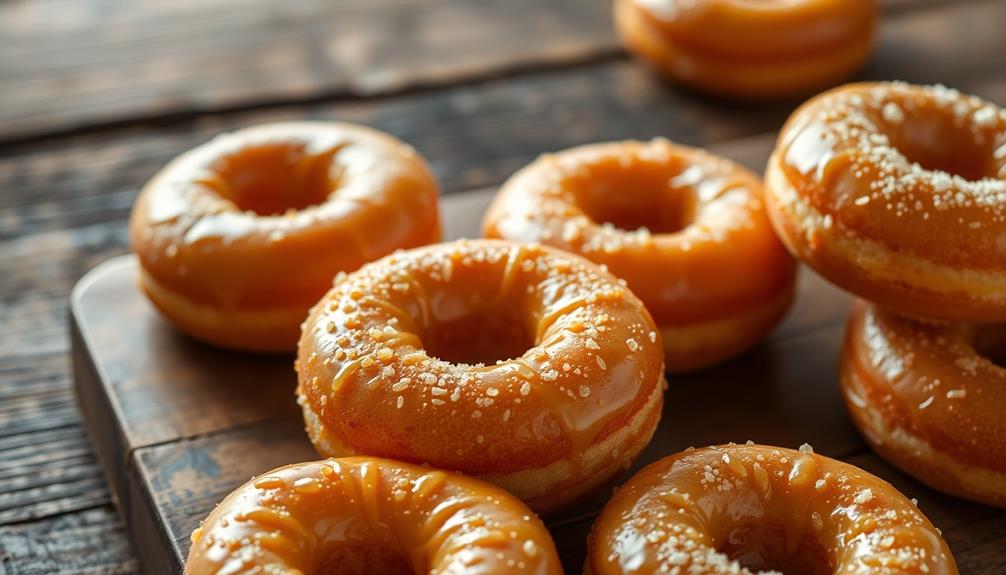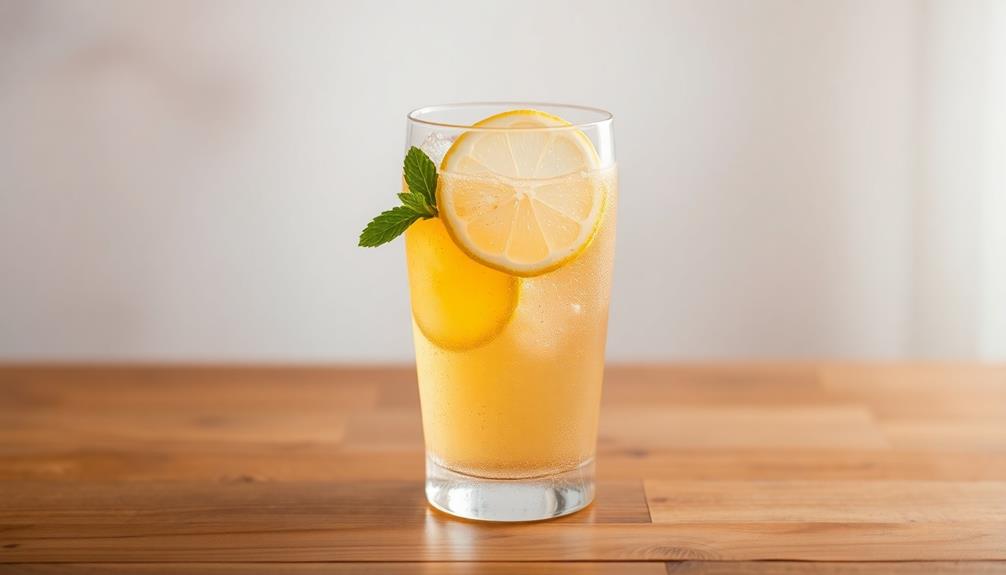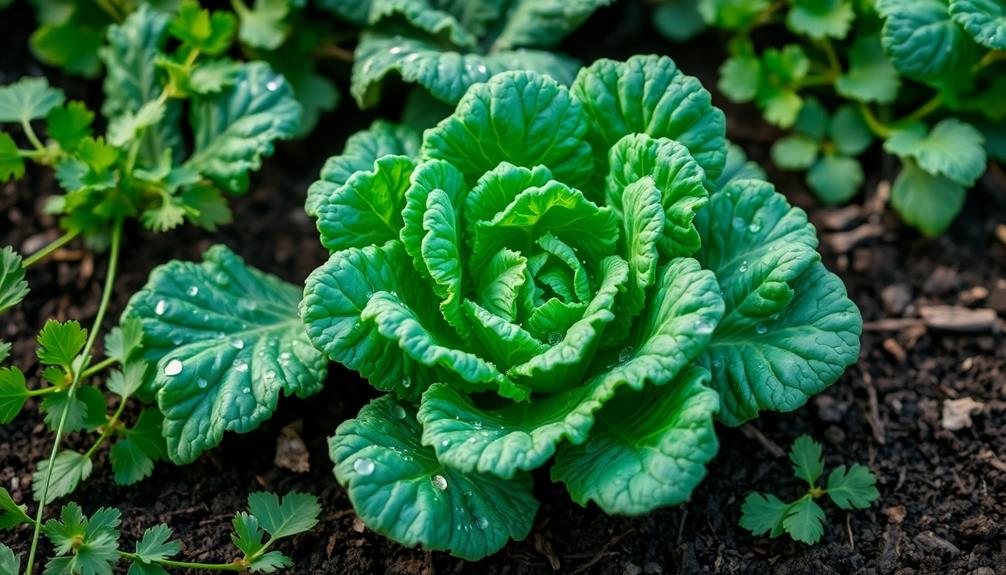You can make the ultimate mashed potatoes at home with just a few simple steps! Start by choosing the right potatoes – starchy Yukon Golds or Russets work best. Peel, chop, and boil them until tender, then mash them up while still hot. For ultra-creamy texture, stir in warm milk and softened butter. Don't overmix, or the potatoes can get gummy. Season with salt and pepper, then get creative by adding garlic, herbs, or cheese. Serve these mashed spuds hot and fluffy, and you'll have a comforting side dish that'll have everyone coming back for seconds. Just wait until you see what else you can do with this classic recipe.
Key Takeaways
- The key to making the ultimate mashed potatoes is to use starchy potatoes like Yukon Gold or Russets for a light and fluffy texture.
- The potatoes should be peeled, cut into 1-inch chunks, and boiled until fork-tender for consistent cooking.
- Mash the potatoes vigorously, then gradually incorporate warm milk and softened butter for a creamy consistency.
- Season the mashed potatoes with salt and pepper to taste, and consider adding garlic, herbs, or cheese for enhanced flavor.
- Serve the mashed potatoes hot, garnished with additional butter or herbs, and pair them with meats, gravies, or roasted vegetables.
History
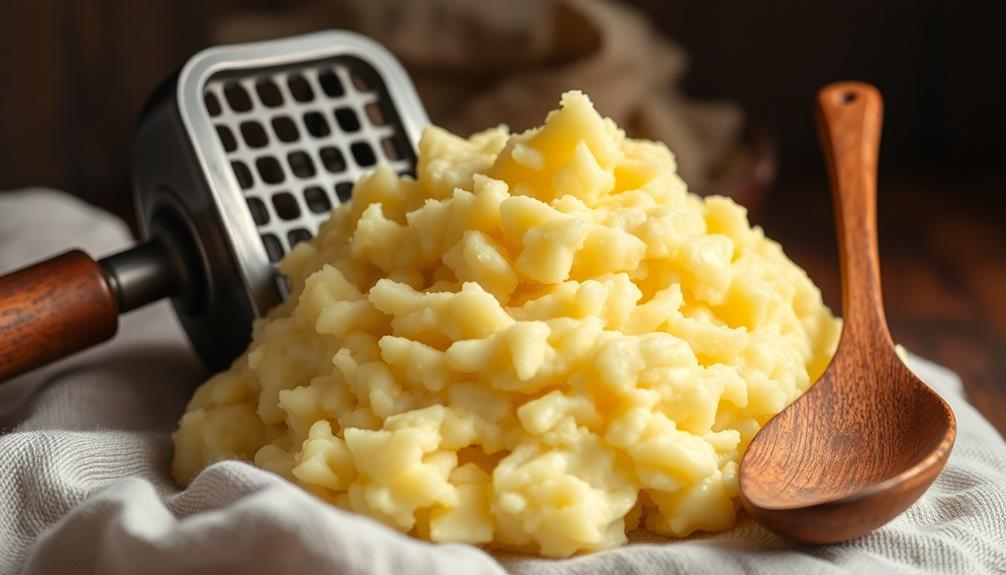
Mashed potatoes have a rich history, dating back centuries to the Inca civilization in South America. These starchy tubers were first domesticated in the Andes mountains, where the Incas revered them as a sacred food.
When Spanish conquistadors arrived in the 16th century, they brought potatoes back to Europe, and the dish slowly spread across the continent.
By the 18th century, mashed potatoes had become a staple in many European households. The recipe continued evolving, with the addition of butter, milk, and seasonings to create the rich, creamy texture we know today.
In the United States, mashed potatoes grew in popularity during the 19th century as an affordable and filling side dish, especially on the frontier and in working-class homes.
Today, mashed potatoes remain a beloved comfort food, enjoyed at family gatherings, holiday meals, and as a simple weeknight side. Their versatility and delicious flavor have solidified their place as a timeless culinary classic.
Recipe

Mashed Potatoes are a classic side dish that can accompany a wide variety of meals. They're creamy, comforting, and easy to make. This recipe will guide you through the steps to create the perfect batch of mashed potatoes.
Mashed potatoes are a versatile dish that can be customized to suit your tastes. Whether you prefer them smooth and creamy or with a bit of texture, this recipe will deliver delicious results. The key to great mashed potatoes is the combination of the right potatoes, the right seasonings, and the right technique.
Ingredients:
- 3 pounds Yukon Gold potatoes, peeled and cut into 1-inch cubes
- 1 cup whole milk
- 4 tablespoons unsalted butter
- 1 teaspoon salt
- 1/4 teaspoon black pepper
Instructions:
Place the cubed potatoes in a large pot and cover with cold water. Bring to a boil over high heat, then reduce the heat to medium-low and simmer until the potatoes are tender when pierced with a fork, about 15-20 minutes.
Drain the potatoes and return them to the pot. Add the milk, butter, salt, and pepper. Mash the potatoes with a potato masher or a hand mixer until smooth and creamy.
For best results, be sure to use Yukon Gold potatoes, which have a creamy, buttery texture when mashed. Additionally, avoid over-mashing the potatoes, as this can result in a gummy, sticky texture.
Serve the mashed potatoes hot, garnished with a pat of butter or chopped chives, if desired.
Cooking Steps

First, peel and cut the potatoes into evenly-sized chunks.
Then, boil the potatoes until they're fork-tender.
Finally, drain the potatoes, mash them vigorously, and stir in butter and milk.
Season with salt and pepper to taste.
Step 1. Peel and Cut Potatoes Into Chunks
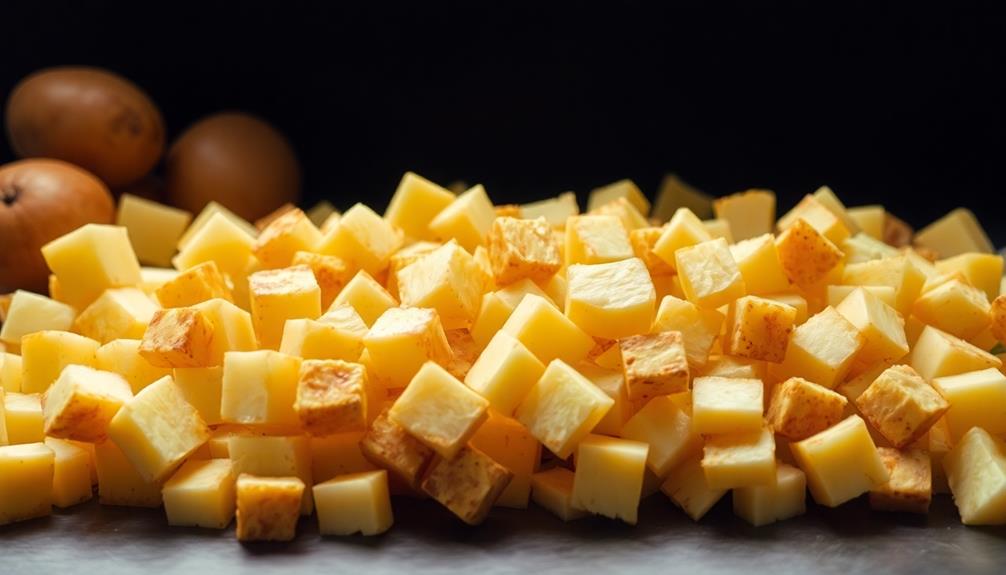
Start by gathering your potato-peeling tools. You'll need a sharp knife and a vegetable peeler.
Wash the potatoes thoroughly under running water, scrubbing off any dirt or impurities. Carefully peel the potatoes using your vegetable peeler, making sure to remove the entire skin. Once peeled, place the potatoes on a cutting board.
Next, use a sharp knife to cut the peeled potatoes into evenly-sized chunks, about 1-inch in size. This will help them cook at the same rate. As you cut, try to keep the pieces uniform so they'll mash together smoothly later on. Avoid cutting the potatoes too small, as they may become waterlogged during the cooking process.
Once all the potatoes are peeled and cut, rinse them under cold water to remove any excess starch. This will help prevent the mashed potatoes from becoming gummy in texture.
Now you're ready to move on to the next step – boiling the potato chunks until tender.
Step 2. Boil Potatoes Until Fork-Tender
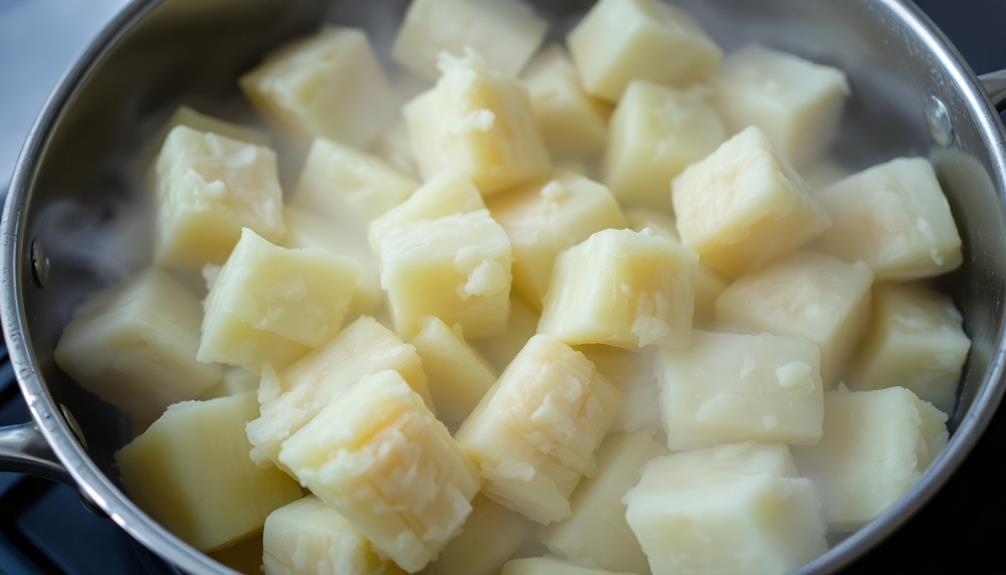
Place the cut potato chunks into a large pot and cover them with cold water. This will help the potatoes cook evenly.
Turn the stovetop to high heat and bring the water to a boil. Once it's boiling, reduce the heat to medium-low and let the potatoes simmer. You'll want to cook them until they're fork-tender, which usually takes 15-20 minutes.
To check if the potatoes are done, stick a fork into one of the chunks. If the fork slides in and out easily, they're ready. Avoid overcooking, as that can make the potatoes waterlogged and gummy. Perfectly cooked potatoes should be soft on the inside but still hold their shape.
Once the potatoes are fork-tender, carefully drain the hot water using a colander. Give the potatoes a few minutes to cool slightly before mashing them. This will make the next step easier and prevent burning your hands.
Now you're ready to move on to the next stage of the ultimate mashed potatoes!
Step 3. Drain Potatoes, Then Mash Vigorously

Once you've drained the hot water from the potatoes, it's time to mash them. Grab a potato masher or a fork and get to work! Mash the potatoes vigorously, breaking them down into a smooth, creamy consistency.
Don't be afraid to really put some muscle into it – the more you mash, the fluffier your mashed potatoes will be. As you mash, you'll notice the potatoes start to release their natural starch, which will help create that signature creamy texture.
Keep mashing until there are no more lumps or chunks, and the potatoes have a uniform, velvety smoothness. If the potatoes seem a bit dry, you can add a splash of the hot cooking water to help loosen them up.
Once the potatoes are perfectly mashed, you're ready to move on to the next step of adding your favorite seasonings and mix-ins. Get ready to create the ultimate, irresistible batch of homemade mashed potatoes!
Step 4. Add Butter and Milk
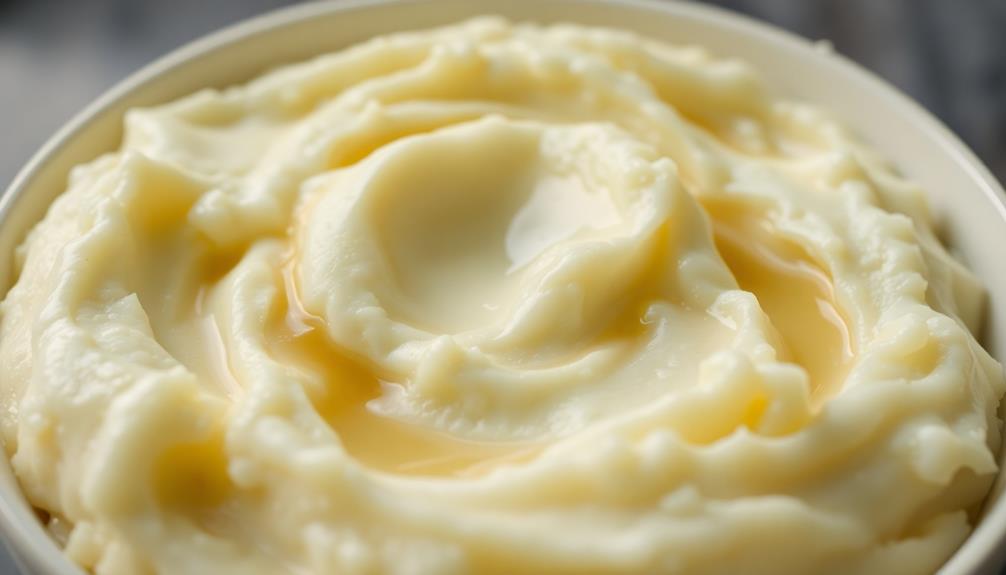
With the potatoes perfectly mashed, it's time to introduce the key dairy components that will elevate your mashed potatoes to a whole new level of creaminess and richness.
First, add a generous pat of butter, around 2-3 tablespoons, to the mashed potatoes. The butter will melt into the hot potatoes, creating a silky smooth texture.
Next, slowly pour in about 1/2 cup of warm milk, stirring gently as you go. The milk will add moisture and a subtle dairy flavor, making your mashed potatoes extra luscious.
Don't be afraid to add a touch more milk if the consistency seems too thick.
Finish by seasoning with salt and pepper to taste.
With the perfect balance of butter and milk, your mashed potatoes will be velvety smooth, rich, and incredibly flavorful.
Get ready to impress your family and friends with this mouthwatering side dish!
Step 5. Season With Salt and Pepper
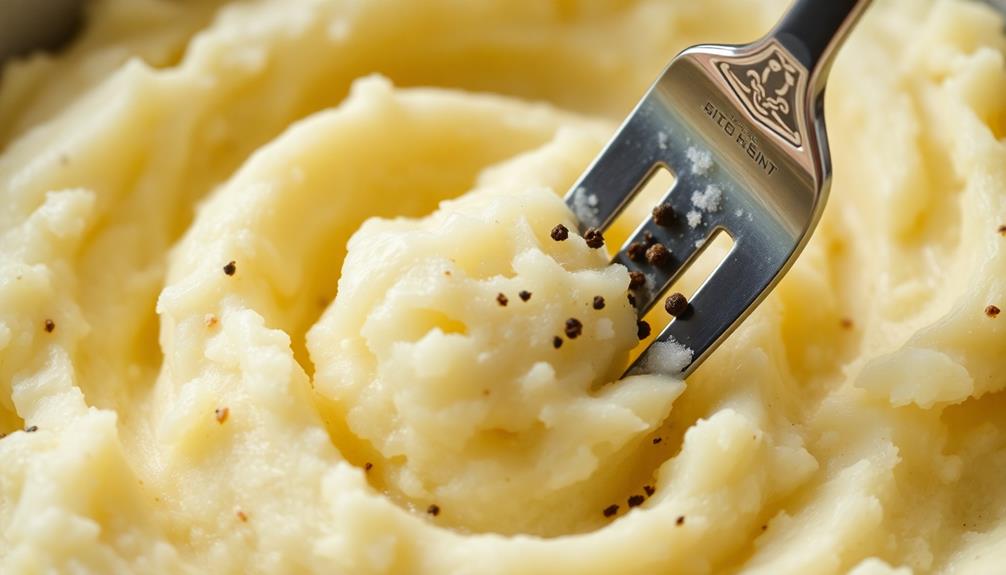
Now that you've added the creamy butter and milk, it's time to season the mashed potatoes with salt and pepper to complete the flavors.
Start by adding a pinch of salt and giving the potatoes a taste. If they need a bit more, add another pinch. Go slowly, as you can always add more, but it's tricky to fix over-salted potatoes.
Next, add a few grinds of black pepper. The amount you use will depend on your personal preference, but start with about 1/4 teaspoon and increase from there. The pepper will add a lovely warmth and depth to the mashed potatoes.
Remember to taste as you go – the perfect seasoning is all about finding the right balance for your taste buds.
With the right amount of salt and pepper, your mashed potatoes will be seasoned to perfection, ready to delight your family and friends. Don't be afraid to adjust the seasoning until it's just right.
Final Thoughts
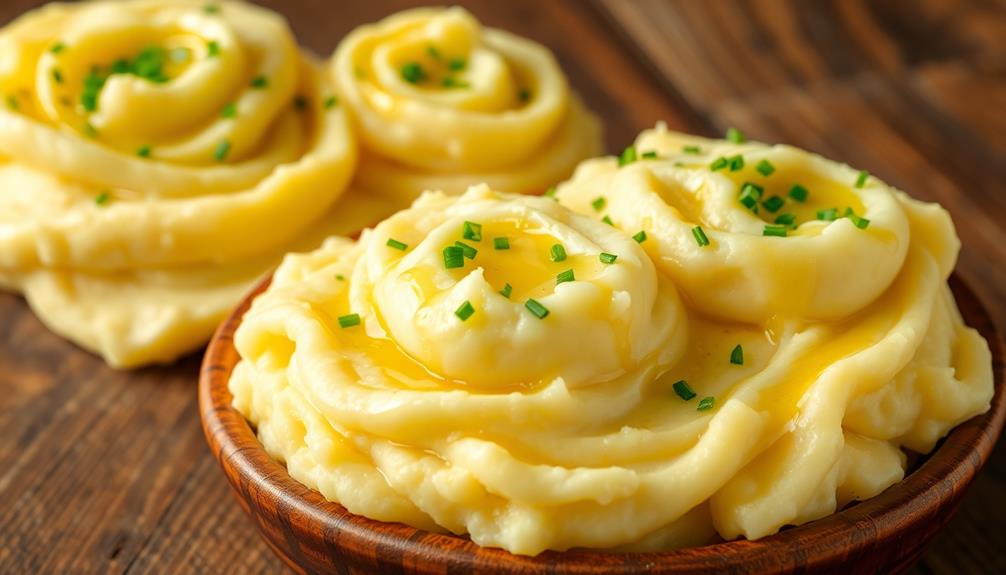
Bringing this mashed potatoes recipe to a close, you can now sit back and savor the creamy, comforting results of your efforts.
This simple yet satisfying dish has been transformed from basic boiled potatoes into a luxurious, flavorful side that's sure to impress your family and friends.
As you tuck into your piping hot, fluffy mashed potatoes, remember that the true joy lies in the process. From selecting the perfect potatoes to mastering the art of mashing, each step has contributed to the final, mouthwatering outcome.
Feel proud of your culinary accomplishments and don't be afraid to experiment with different seasonings or mix-ins to make this recipe your own.
Whether you're a seasoned cook or just starting to explore the world of home-cooked meals, this mashed potatoes recipe is a keeper.
Enjoy every bite, and don't be surprised if your loved ones request seconds – or even thirds!
Frequently Asked Questions
Are Mashed Potatoes Gluten-Free?
Yes, mashed potatoes are typically gluten-free. Potatoes don't naturally contain gluten, so as long as you don't add any gluten-containing ingredients, your mashed potatoes should be safe for those following a gluten-free diet.
How Can I Make Mashed Potatoes More Creamy?
To make your mashed potatoes more creamy, try adding a few tablespoons of butter or cream, and use a potato masher or ricer to get a smooth, lump-free texture. You can also try adding a splash of milk or half-and-half to reach your desired consistency.
Can I Use a Food Processor to Mash Potatoes?
You can use a food processor to mash potatoes, but you'll need to be careful. The high speed of a food processor can make the potatoes gluey and overworked, resulting in a gloppy texture. It's generally better to use a potato masher or ricer instead.
How Long Do Leftover Mashed Potatoes Last in the Fridge?
Leftover mashed potatoes can last in the fridge for 3-5 days when stored in an airtight container. Be sure to refrigerate them promptly to maintain freshness and food safety. Reheat them gently before serving.
Can I Freeze Mashed Potatoes for Later Use?
Absolutely, you can freeze mashed potatoes for later use. Just be sure to let them cool completely, then store them in an airtight container or freezer bag. They'll keep for up to 3 months in the freezer.





